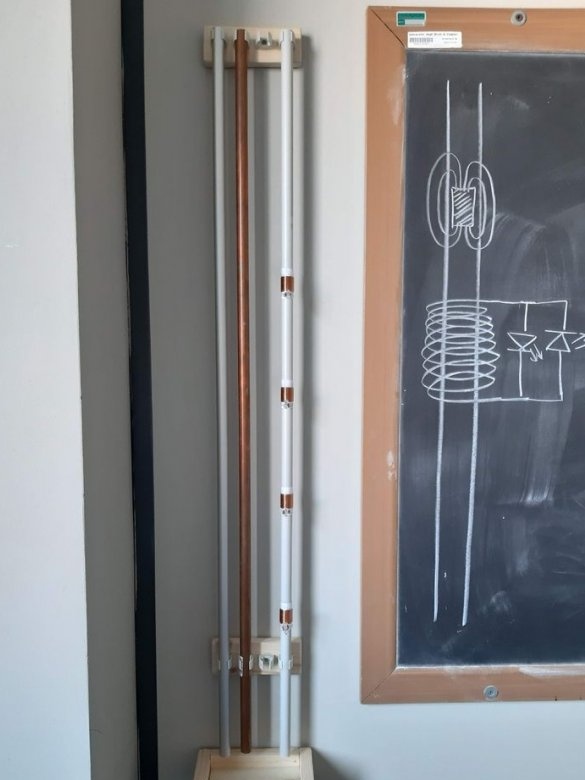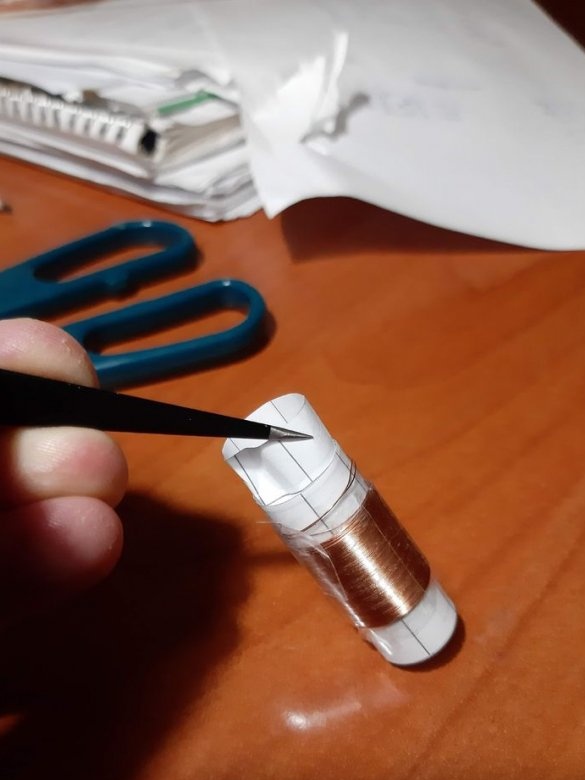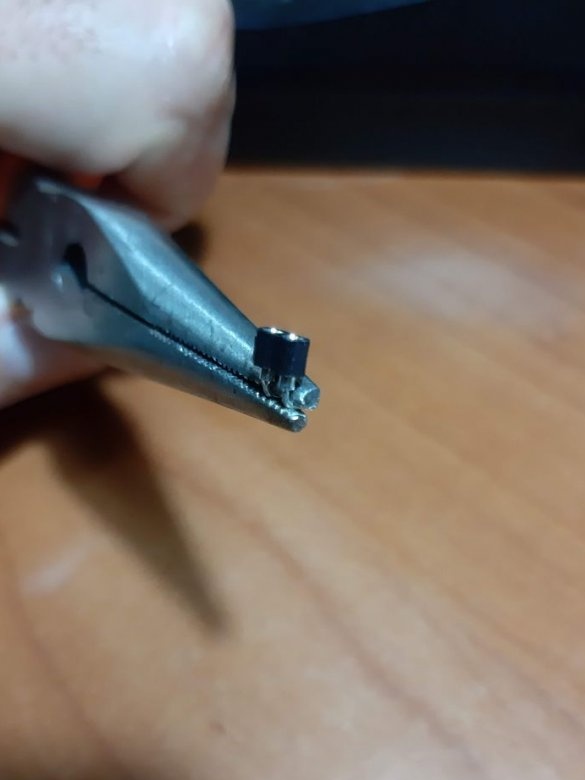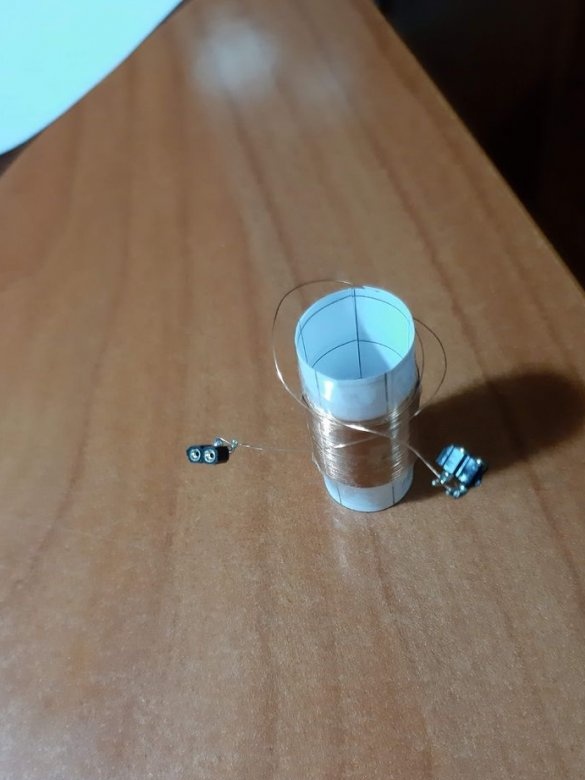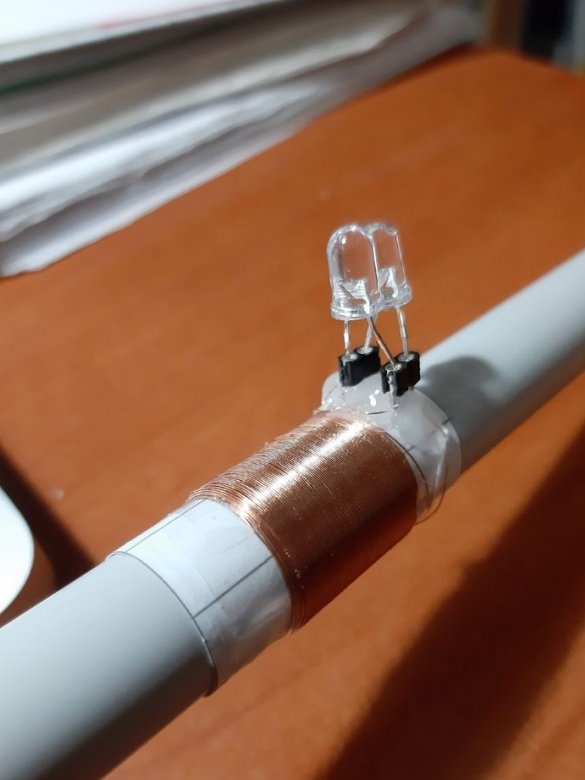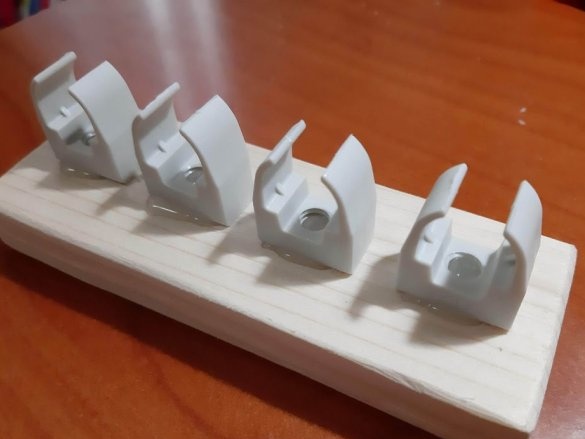What can serve as a training tool in electromagnetic induction? Transformer? Generator? I guess, yes. But the author of Instructables under the nickname rgco came up with much more interesting. In his homemade - three pipes: aluminum, copper and plastic with windings to which the LEDs are connected. In any of them, you can drop a stack of magnets and see how in the first two cases eddy currents will inhibit it, moreover in the second case, and in the third - LEDs will flash as the magnet flies through the windings. And since the stack will accelerate, the lower the winding is located, the brighter the LED connected to it will flash.
With aluminum and copper pipes, everything is clear - you just need to cut them to size, and with plastic pipes you have to tinker, winding windings on it. According to the master, to produce a single-turn winding voltage of 1 V requires that the magnetic flux changes at a speed of 1 (T * m2)/from. Well, since MRI is not provided in the physics room, the task will have to be solved in the generally accepted way - using a multi-turn winding. Moreover, one volt to the LED is not enough. The minimum voltage at which it can glow depends on the wavelength of the emitted light: the shorter the more.
You can also wind the windings directly onto the pipe, but it is more interesting to make them moveable, so students who are already studying electromagnetic phenomena will once again remember about the acceleration of gravity. Indeed, in schools they sometimes test the knowledge passed in previous classes: have they forgotten? Those who wound contour coils and communication coils on magnetic antennas know how to make them movable: using paper frames. So the master does. The windings themselves are four-layer, 80 turns per layer, a total of 320 per winding. In order for the stresses from the layers to form, all of them must be wound in the same direction. That is, either everything is counterclockwise, or everything is on it.
The master connects the connectors to the windings, and to them the LEDs, in parallel, but in different polarity. In another way, it is called "counter-parallel."When the stack of magnets approaches the winding, one LED flashes, and when it has already flown through the winding and moves away from it, the second. If the stack is turned over before being thrown into the pipe, the order of flashing of the LEDs is reversed. If you wish, you can do without connectors by soldering the LEDs directly, but then the number of possible experiments will decrease. Is there enough voltage to open the blue LED, if the winding is at the very top, where the magnets have not yet reached high speed? And if you change the LED to infrared, observed through the smartphone’s camera?
The master puts on the windings with LEDs on the pipe and tries to pass a stack of magnets through it:
The master makes two identical holders - upper and lower, their design is clear from the following photo:
The master provides for the possibility of installing a fourth pipe in case he comes up with what it will be. The KDPV also shows a shelf into which a stack of magnets will fall. Taking it from there is more convenient than from the floor.
So we got such a study guide from which you won’t drag the students by the ears. Which happens quite rarely.

